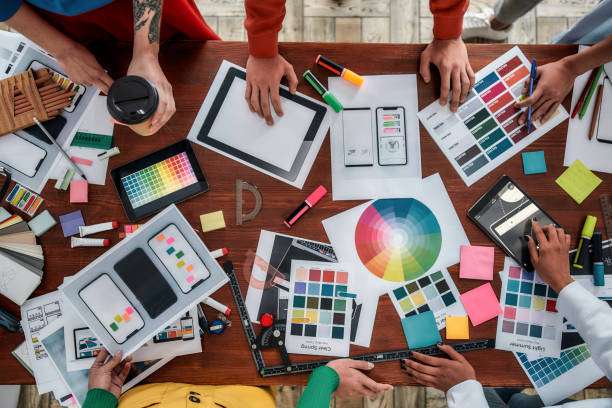How to be a good graphic designer
Here are some tips on how to become a good graphic designer:
- Develop a strong foundation: Learn the basic principles of design, such as color theory, typography, composition, and layout. Having a strong foundation will help you create effective designs and communicate your ideas more effectively.
- Stay up-to-date with trends and technology: The design industry is constantly changing, so it’s important to stay current with the latest trends, tools, and techniques. Attend conferences, take online courses, and read industry blogs and publications to keep your skills and knowledge up-to-date.
- Practice, practice, practice: The more you design, the better you will become. Set aside time each day to work on personal projects, explore new styles, and experiment with different techniques.
- Seek feedback: Don’t be afraid to ask for feedback on your work. Seek out critiques from other designers, colleagues, and clients. Constructive criticism can help you identify areas for improvement and refine your design skills.
- Collaborate with others: Working with other designers, developers, and stakeholders can help you learn new skills and approaches to design. Collaborating with others can also help you see different perspectives and create more effective designs.
- Stay organized: Being a good graphic designer also means being organized. Keep track of deadlines, maintain clear communication with clients, and use project management tools to keep your work on track.
- Be open to learning and growth: The design industry is always evolving, so it’s important to stay open to learning and growth. Be curious, ask questions, and don’t be afraid to take on new challenges. The more you learn and grow, the better you will become as a designer.
- Read More: Branding and Identity in Graphic Designing
Develop a strong foundation
Developing a strong foundation is a crucial step in becoming a good graphic designer. Here are some tips on how to do it:
- Learn the basics: Start by learning the basic principles of design, such as color theory, typography, composition, and layout. These principles are the building blocks of good design, and understanding them will help you create more effective designs.
- Study design history: Understanding the history of design can help you gain a deeper appreciation for the field and develop a sense of design context. Look at the work of famous designers and design movements, and try to understand how they influenced the field.
- Practice, practice, practice: The more you design, the better you will become. Set aside time each day to work on personal projects, explore new styles, and experiment with different techniques.
- Take courses and workshops: There are many online and offline courses and workshops available that can help you develop your skills and learn new techniques. Look for courses in areas that interest you, such as branding, web design, or illustration.
- Build a strong portfolio: As you develop your skills, start building a portfolio of your work. Your portfolio should showcase your skills and demonstrate your ability to create effective designs.
- Seek feedback: Don’t be afraid to ask for feedback on your work. Seek out critiques from other designers, colleagues, and clients. Constructive criticism can help you identify areas for improvement and refine your design skills.
- Stay up-to-date with design trends and technology: The design industry is constantly changing, so it’s important to stay current with the latest trends, tools, and techniques. Attend conferences, take online courses, and read industry blogs and publications to keep your skills and knowledge up-to-date. More











